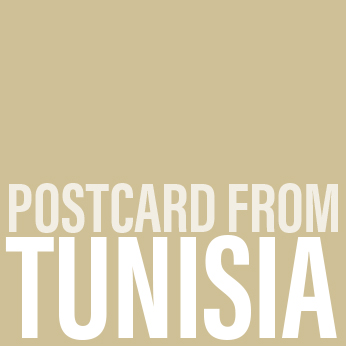
I spotted the snake eagle soaring on a thermal jet, high above the lush farmlands and rocky cliffs of Cap Bon, the fertile peninsula jutting into the Mediterranean off Tunisia's east coast. It seemed a fitting welcome as I wound my way towards my destination: a wild hot spring only a 90-minute drive from the capital.
The Romans knew the source as Aquae Calidae Carpitanae, but for centuries in the modern age it has gone by its Arabic name, Ain Atrous – Eagle spring.

At the crest of the hill, before the road drops steeply down the red, rocky cliffs towards the sea, an elderly beekeeper in a thick woollen burnous robe passed the hours under a weathered pine tree, a small plastic table stacked with jars of honey tempting drivers to pause and consider his wares.
Clear and dark, the honey comes from two different kinds of bees, he said: his domestic bees, who feed on apricot, almond, peach and cherry blossoms in the nearby orchards each winter where they work as pollinators; and wild bees, their hives tucked into the cliffs, who forage on wild thyme and other low shrubs that grow along the coasts. The wild honey was almost peppery, and tasted of the sea in a way that cannot quite be explained. A half litre is $5, and would be gone by the end of the week, slathered on to every imaginable kind of bread and fruit, or licked straight from a spoon.

Honey in hand, I climbed to the top of the hill, where the forest and farmlands give way to the rocky ochre cliffs and pebble beach opening out on to the bay of Tunis. From a distance, the sound of women's laughter carried up from the ravine, and soon Henda Sawadi and a group of women from the surrounding area emerged with baskets bursting with herbs they collected from the surrounding hills.
She handed me a sprig of wild rosemary, which has a woody, medicinal smell. "We use it for tisanes, for traditional remedies," she said. "It's good for headaches or stomach problems."
Much of the coast around Korbus is designed to heal. At the bottom of the steep ravine is the spring, flowing straight from the hillside to the sea, where locals and tourists alike come to drink, wash or convalesce in the mineral rich water and unmediated beauty of the coast.

The place itself is blissfully undeveloped: there are no spa facilities, no changing rooms, no infrastructure other than a small channel that funnels the spring's piping-hot 59ºC water towards the sea, where it mingles with seawater to create a swirl of sulphurous, salty steam and pools perfect for soaking. A small parking lot with a fee of 1.5 dinars ($0.50) is just above the spring alongside a few ramshackle fish shacks that in summer sell grilled sea bream sandwiches smeared with harissa and charred peppers.
A lone vendor hawks clay harvested from the nearby hills for women to use as beauty masks. Occasionally a diver will emerge from the surf with a crate full of fresh urchins, cut one open with sharp shears, squeeze a bit of lemon on it and feed you the pillowy, briny flesh from a tiny spoon, all for a few cents apiece.

Unlike many of Tunisia's costal attractions, the spring is a locals' affair, with families coming to soak in the sea and spend the afternoon picnicking along the shore. Tourists come and go, pausing for a moment to dip a finger into the hot water but rarely descending the slick rocks into the surf. Meanwhile those embracing a slower pace share sheared-off bottles to pour warm water over their heads, and jostle around each other so children are in the perfect sweet spot – not too hot, not too cold.

It is also a place for the aged and infirm seeking relief from what ails them. An elderly woman with a walker was carried down the steep stairs and set up to rest her feet on the hot stones in the channel; a young man with pins and rods holding together a shattered tibia sat near by, placing rags soaked in the water on his wound.
In his photographs of Tunisia in the late 1990s, the photographer Jellel Gasteli captured the spring at Korbus as it was then, brimming with people, swirled in mist; 30 years on the scene looks nearly identical.

"Isn't this place wonderful?" a young man asked me on a recent visit as we floated out past the warm water into the sea. When I told him it was my favourite place in the whole country, he beamed. "I hope they never make it a place for tourists. It is the last free, wild place in Tunisia, and it is perfect that way."





